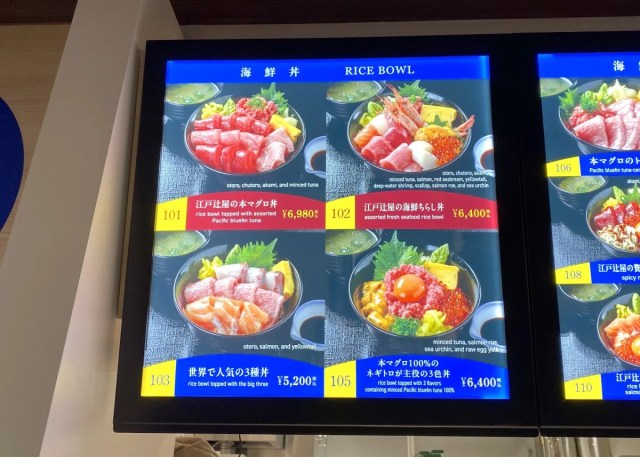
Return of inbound tourists means prices are skyrocketing, with some places charging US$120 for a bowl of seafood.
In Japan, the suffix “don” (from “donburi” or “large bowl”) is used for one-bowl meals containing rice and a topping, like gyudon (beef rice bowl), katsudon (fried cutlet rice bowl), and oyakodon (chicken and egg rice bowl).
In recent months, however, a new type of “don” has been gaining traction in Japan — the Inbound Don. Taking its name from inbound tourists, this term refers to the incredibly overpriced meals that have been appearing at tourist spots, including popular ski resorts such as Niseko.
▼ In a country where you can get huuuuge bowls of katsudon like the one pictured below for 1,100 yen (US$7.31) , anything more than that is considered expensive.
Inbound-don, or “インバウン丼” (“inboundon”) as it’s known in Japanese, is a catchall term for any type of meal that’s typically around twice as expensive as locals would expect to pay for them. The logic behind the jacked-up prices is that overseas travellers are prepared to pay more as it matches the price of Japanese food in their home countries, and it’s made even more affordable to them due to the weak yen.
This doesn’t bode well for locals who live and work in Japan, however, as the comparatively low incomes and weak yen make these exorbitantly priced foods unaffordable. One place where this has become a problem is at the newly opened
Toyosu Senkyaku Banrai in Tokyo’s Toyosu neighbourhood, where overseas tourists who were recently interviewed by a local television station described the meals there as “delicious” and “reasonable” in terms of price, while Japanese locals simply had one word for them: “unaffordable“.
▼ Toyosu Senkyaku Banrai opened next to the Toyosu Fish Market on 1 February.
This Edo-themed onsen, restaurant and hotel complex is aimed at overseas visitors, but a lot of local residents have been making the trip to Toyosu to check it out. While high prices are somewhat expected at tourist spots, the prices here are staggering, with one bowl of seafood dubbed “Emperor” selling for 18,000 yen ($119.67).
Our reporter P.K. Sanjun visited on a weekday to inspect the eateries firsthand, and during his time there, he said roughly 70 percent of the visitors where Japanese, with only around 30 percent being inbound tourists from overseas.
▼ Sorry, locals — you’ll have to pay through the nose or go hungry here.
As he walked around the restaurant area, P.K. began to feel bad for fellow locals on a similar wage to him, because the meals on the signboards were way more expensive than usual.
▼ Inbound Don here, there and everywhere.
Nobody would expect to pay 4,400 yen for a bowl of seafood outside of an elite sushi restaurant in a posh neighbourhood, and even then it’d have to taste exceptional to be worth that price. Yet, as P.K. walked around he saw this was the standard price for meals here, and even the cheapest option at one of the all-you-can-eat restaurants was 6,578 yen, which a local would balk at.
Even the food court, with its laid-back, casual eatery feel, was selling donburi rice bowls for upwards of 5,200 yen, with the most expensive being 6,980 yen.
▼ Ordinarily you could pay 6,980 yen for a full meal at a good sushi restaurant in Japan and still have change.
While these overpriced meals are obviously aimed at inbound tourists, this new complex is yet to become well known with overseas visitors, so as P.K. walked around, he could hear many Japanese customers commenting on the presence of the “Inbound don”.
In the end, P.K. settled on one of the cheapest meals he could find, which was still quite expensive — a 2,000-yen seafood rice bowl.
This spot was busier than most, with most of the customers being like-minded visitors searching for something that wasn’t totally out of their price range.
▼ The question was: Would it be worth the 2,000 yen?
Well, this was definitely quality seafood, and P.K. couldn’t deny it was fresh and delicious. As he savoured the thin slices in his bowl, he realised that though the complex was charging high prices for their meals, it wasn’t totally unjustified, because instead of offering cheap cuts and seafood varieties, they were focussing on more high-quality options in the upper price range.
While locals might reserve these types of meals for special occasions, overseas tourists are willing to pay top dollar, or top yen, for quality seafood at a tourist site like this, but it comes at a cost to locals, who feel pushed away by the high prices. Inbound Don is therefore becoming a problem that needs to be addressed, to ensure that places and restaurants remain affordable for locals. One possible solution put forward by pundits is to introduce double pricing at tourist sites, like the system that exists in places like Thailand, where residents are charged one price to enter temples or ride tuk tuks and tourists are charged higher prices.
Whatever happens, P.K. reckons it’s an issue that ought to be ironed out soon, because with inbound tourist numbers now returning to pre-pandemic levels, the desire to profit on the tourist dollar in the midst of rising living costs in Japan is stronger than ever, and it affects everyone in the country, visiting or otherwise.
So if you do visit Senkyaku Banrai, be prepared to pay for high quality seafood. If you’re looking for a more affordable option, though, you can always pop over to the nearby Toyosu Fish Market, where you can pick up a meal at one of the eateries enjoyed by staff for a fraction of the price.
Site information
Toyosu Senkyaku Banrai / 豊洲千客万来
Address: Tokyo-to, Koto-ku, Toyosu 6-5-1
東京都江東区豊洲6丁目5番1号
Website (Toyosu Senkyaku Banrai, Tokyo Toyosu Manyo Club)
Photos ©SoraNews24
● Want to hear about SoraNews24’s latest articles as soon as they’re published? Follow us on Facebook and Twitter!
[ Read in Japanese ]

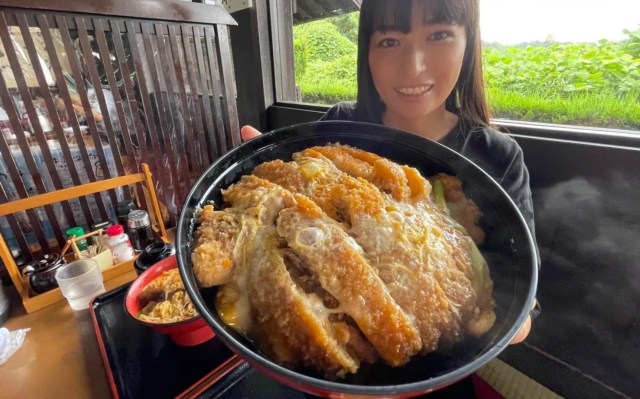
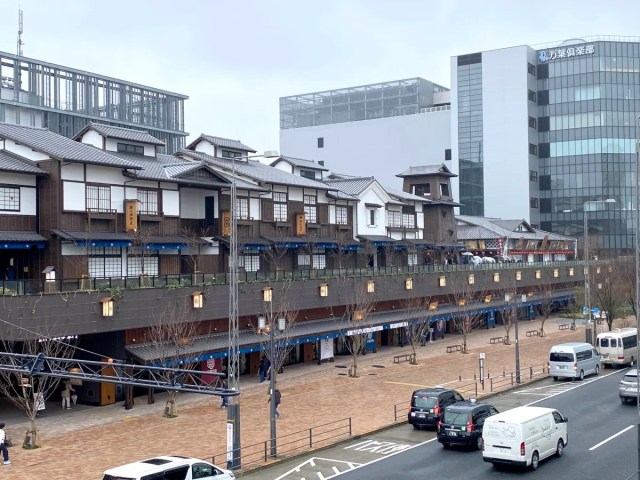
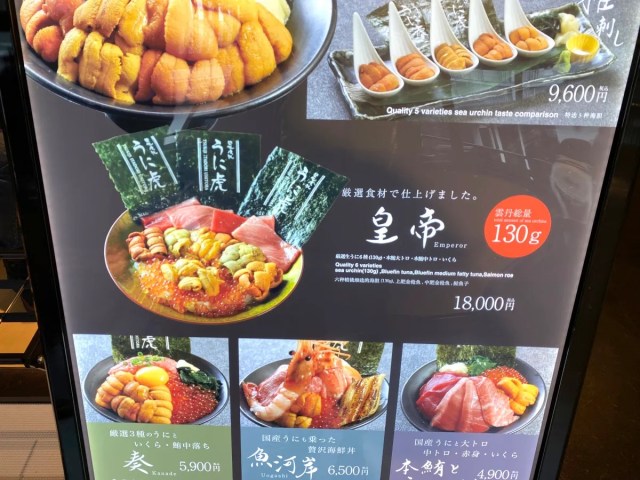
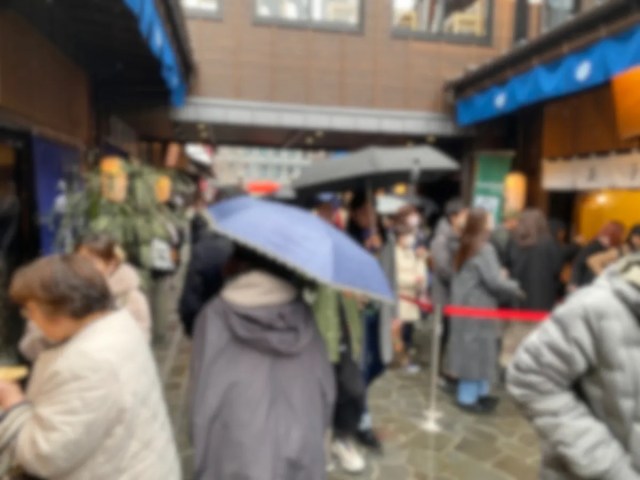
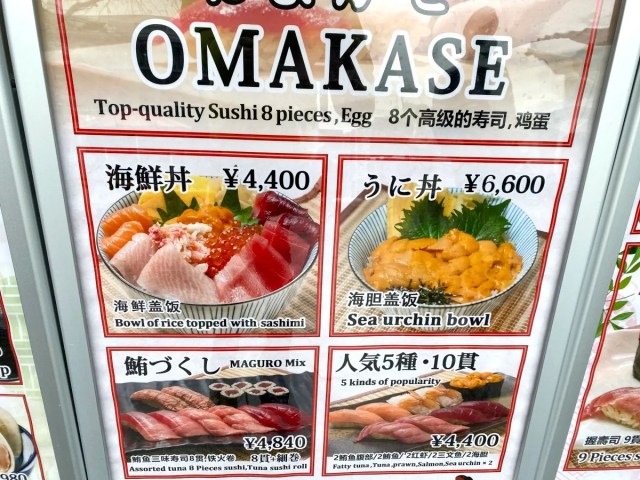
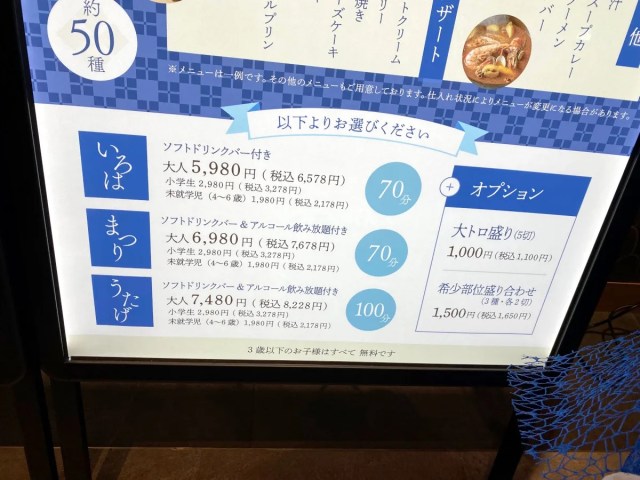
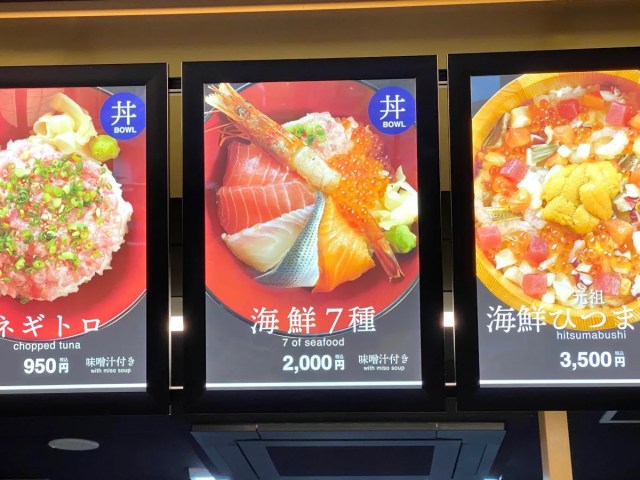
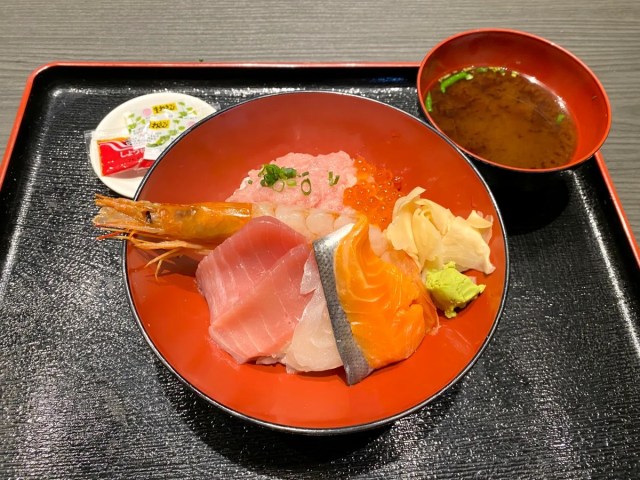
 “Foreign travelers are Japan’s guests” – Governor against charging tourists more than locals
“Foreign travelers are Japan’s guests” – Governor against charging tourists more than locals 5 reasons why foreign tourists should skip Tsukiji and go to a different place in Tokyo instead
5 reasons why foreign tourists should skip Tsukiji and go to a different place in Tokyo instead Tokyo’s newest hot spring bathhouse and foodie spot opening next to Japan’s biggest fish market
Tokyo’s newest hot spring bathhouse and foodie spot opening next to Japan’s biggest fish market Mr. Sato attacks a massive castle of seafood at a new restaurant in Tokyo Skytree’s Solamachi
Mr. Sato attacks a massive castle of seafood at a new restaurant in Tokyo Skytree’s Solamachi Why hayashi rice should be your last meal before leaving Japan
Why hayashi rice should be your last meal before leaving Japan Japan’s new difficult-to-drink-from beer glass protects your liver, but it’s a brutal experience
Japan’s new difficult-to-drink-from beer glass protects your liver, but it’s a brutal experience How to order snacks on a Shinkansen bullet train in Japan
How to order snacks on a Shinkansen bullet train in Japan New Pokémon ice cream, dessert drinks, and cool merch coming to Baskin-Robbins Japan【Pics】
New Pokémon ice cream, dessert drinks, and cool merch coming to Baskin-Robbins Japan【Pics】 Demon Slayer: Kimetsu no Yaiba gets new roller coaster attractions and food at Universal Studios Japan
Demon Slayer: Kimetsu no Yaiba gets new roller coaster attractions and food at Universal Studios Japan Caffeinated ramen for gamers that you can eat with one hand going on sale in Japan
Caffeinated ramen for gamers that you can eat with one hand going on sale in Japan Burger King Japan suddenly adds Dr. Pepper and Dr. Pepper floats to its menu nationwide
Burger King Japan suddenly adds Dr. Pepper and Dr. Pepper floats to its menu nationwide “The most Delicious Cup Noodle in history” – Japan’s French Cup Noodle wins our heart【Taste test】
“The most Delicious Cup Noodle in history” – Japan’s French Cup Noodle wins our heart【Taste test】 New samurai glasses are Japan’s latest weird must-have souvenir
New samurai glasses are Japan’s latest weird must-have souvenir Doraemon found buried at sea as scene from 1993 anime becomes real life【Photos】
Doraemon found buried at sea as scene from 1993 anime becomes real life【Photos】 Hello, cosmetics! Clinique teams up with Hello Kitty this summer for first-time collaboration
Hello, cosmetics! Clinique teams up with Hello Kitty this summer for first-time collaboration Nintendo history you can feel – Super NES, N64, and GameCube controllers become capsule toys
Nintendo history you can feel – Super NES, N64, and GameCube controllers become capsule toys Starbucks releases a cute Frappuccino and Unicorn Cake…but not in Japan
Starbucks releases a cute Frappuccino and Unicorn Cake…but not in Japan Kyoto Tower mascot termination reveals dark side behind cute Japanese characters
Kyoto Tower mascot termination reveals dark side behind cute Japanese characters McDonald’s Japan’s Soft Twist Tower: A phantom ice cream only sold at select branches
McDonald’s Japan’s Soft Twist Tower: A phantom ice cream only sold at select branches Yabai Ramen: What makes this Japanese ramen so dangerous?
Yabai Ramen: What makes this Japanese ramen so dangerous? Finally! Nintendo Japan expands Switch 8-bit controller sales to everybody, Online member or not
Finally! Nintendo Japan expands Switch 8-bit controller sales to everybody, Online member or not Japanese government wants to build luxury resorts in all national parks for foreign tourists
Japanese government wants to build luxury resorts in all national parks for foreign tourists To combat declining birth rate, Japan to begin offering “Breeding Visas” to foreigners
To combat declining birth rate, Japan to begin offering “Breeding Visas” to foreigners 10 things you should buy at 7-Eleven in Japan
10 things you should buy at 7-Eleven in Japan Studio Ghibli releases anime heroine cosplay dresses that are super comfy to wear
Studio Ghibli releases anime heroine cosplay dresses that are super comfy to wear Woman charged for driving suitcase without a license in Osaka
Woman charged for driving suitcase without a license in Osaka Studio Ghibli unveils My Neighbour Totoro miniature house model
Studio Ghibli unveils My Neighbour Totoro miniature house model Kyoto experiencing problems with foreign tourists not paying for bus fares, but not on purpose
Kyoto experiencing problems with foreign tourists not paying for bus fares, but not on purpose Fighting mild hunger with a Japanese soda that turns into jelly in the stomach【Taste test】
Fighting mild hunger with a Japanese soda that turns into jelly in the stomach【Taste test】 Studio Ghibli’s Howl’s Moving Castle tapestry unveiled in Japan for first time
Studio Ghibli’s Howl’s Moving Castle tapestry unveiled in Japan for first time McDonald’s new Happy Meals offer up cute and practical Sanrio lifestyle goods
McDonald’s new Happy Meals offer up cute and practical Sanrio lifestyle goods Sales of Japan’s most convenient train ticket/shopping payment cards suspended indefinitely
Sales of Japan’s most convenient train ticket/shopping payment cards suspended indefinitely Sold-out Studio Ghibli desktop humidifiers are back so Totoro can help you through the dry season
Sold-out Studio Ghibli desktop humidifiers are back so Totoro can help you through the dry season Japanese government to make first change to romanization spelling rules since the 1950s
Japanese government to make first change to romanization spelling rules since the 1950s Foreigner’s request for help in Tokyo makes us sad for the state of society
Foreigner’s request for help in Tokyo makes us sad for the state of society Ghibli founders Toshio Suzuki and Hayao Miyazaki contribute to Japanese whisky Totoro label design
Ghibli founders Toshio Suzuki and Hayao Miyazaki contribute to Japanese whisky Totoro label design Tokyo’s most famous Starbucks is closed
Tokyo’s most famous Starbucks is closed Princesses, fruits, and blacksmiths: Study reveals the 30 most unusual family names in Japan
Princesses, fruits, and blacksmiths: Study reveals the 30 most unusual family names in Japan Fisherman’s izakaya serves up awesome fresh seafood in Tokyo
Fisherman’s izakaya serves up awesome fresh seafood in Tokyo Sushi Dai and other famous restaurants from Tsukiji fish market open at new Toyosu location
Sushi Dai and other famous restaurants from Tsukiji fish market open at new Toyosu location Japanese government wants to build luxury resorts in all national parks for foreign tourists
Japanese government wants to build luxury resorts in all national parks for foreign tourists “Hey, Japanese taxi driver, take us to the best Okinawan restaurant in Naha!”
“Hey, Japanese taxi driver, take us to the best Okinawan restaurant in Naha!” Ginza hotel serves up one of the best breakfasts in Tokyo
Ginza hotel serves up one of the best breakfasts in Tokyo Restaurants, Roads, Rats: How has Tsukiji changed after the fish market move?
Restaurants, Roads, Rats: How has Tsukiji changed after the fish market move? Japan’s first-ever wanko soba conveyor belt restaurant opens in Tokyo
Japan’s first-ever wanko soba conveyor belt restaurant opens in Tokyo Secret staff cafeteria in Tokyo is a hidden gem you won’t find in travel guides
Secret staff cafeteria in Tokyo is a hidden gem you won’t find in travel guides Insanely cheap Wagyu beef sushi box on sale at Japan’s one and only beef sushi restaurant
Insanely cheap Wagyu beef sushi box on sale at Japan’s one and only beef sushi restaurant Huge price hike for Japan Rail Pass triggers huge drop in foreign travelers who’ll buy it【Survey】
Huge price hike for Japan Rail Pass triggers huge drop in foreign travelers who’ll buy it【Survey】 Japanese prefectural governor wants foreign tourists to pay special extra fee
Japanese prefectural governor wants foreign tourists to pay special extra fee Randomly running into a great sushi lunch like this is one of the best things about eating in Tokyo
Randomly running into a great sushi lunch like this is one of the best things about eating in Tokyo Tomahawk Tonkatsu at Japanese restaurant becomes a hot topic online
Tomahawk Tonkatsu at Japanese restaurant becomes a hot topic online New Ginza sushi bar offers 21-piece omakase course for just US$60
New Ginza sushi bar offers 21-piece omakase course for just US$60 The best place to eat Japanese breakfast for US$2: Cheap food hack for locals and tourists
The best place to eat Japanese breakfast for US$2: Cheap food hack for locals and tourists Bacon and Egg Sauce Katsudon: A new way to eat breakfast in Japan
Bacon and Egg Sauce Katsudon: A new way to eat breakfast in Japan Tokyo’s famous Lost in Translation hotel is closed
Tokyo’s famous Lost in Translation hotel is closed
Leave a Reply